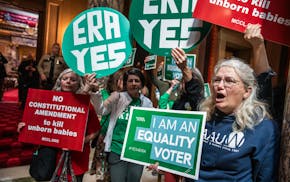Along about 1962, the postwar generation started lining up at motor-vehicle offices across the country to get driver's licenses. American life was never the same after that. The so-called baby boomers seemed intent on leaving a distinctive mark on their era: They would be forever young -- and forever mobile.
In some ways they've kept their promises, thanks to cosmetic surgery, fad diets and a remarkable passion for driving. In a span of 40 years -- 1969 to 2009 -- Americans dramatically expanded their travel habits.
Led by the boomer generation, they drove more miles and made more trips year upon year. The number of drivers doubled over those four decades, and the number of cars tripled. Miles traveled grew twice as fast as the population, with daily travel increasing by an average of 15 miles per day, per person. Multicar households exploded from 33 percent of all households to 77 percent.
In effect, boomers reconfigured the American lifestyle for maximum driving. The change was fueled by two big trends:
• Starting in the 1970s, women went to work by the millions. Not only did that put more cars on the roads, it launched a new mobile industry -- day care -- and a new appetite for restaurant food. Altogether, car trips not related to work grew fivefold after 1977.
• Sprawl was the other component. As families and jobs continued to migrate to the suburbs and exurbs, vast spaces were created between people and their destinations. Baby boomers, in effect, validated the trade that their parents already had made. Proximity was traded for distance, and travel choices (like trolleys or walking) were traded for an almost total reliance on the car.
But now comes the unintended consequence. Boomers are aging. The largest population bubble in U.S. history is entering the empty-nest and retirement stage of life. Its "forever young, forever mobile" illusion is running up against reality. Driving no longer holds the same appeal or necessity. And there's evidence that the postwar generation's children and grandchildren want a less spacious, less auto-dependent lifestyle.
Clearly, the boomers have unintentionally left a predicament for themselves and a slew of questions for those charged with forging transportation and land-use policy in the decades ahead:
How much will boomers drive in old age? How will their habits affect roadway safety, air quality, energy prices and real-estate decisions? Will they need extra help to get from far-flung homes to grocery stores, medical appointments and other destinations? If so, who will pay? How many boomers will age in place? How many will relocate to communities that require less driving? How will technology (online shopping, home offices, etc.) change transportation patterns for drivers of all ages?
The year-by-year increase in car travel began to decline in 2009, while transit trips continue to edge upward. Whether this turn reflects the changing habits of boomers or is simply the fallout from the recession isn't yet known. A new report from the AARP Public Policy Institute makes that observation and asks some of the same questions we've posed about the boomers' future travel habits. But it offers no easy answers.
Truth is, the postwar cohort is so large and the nation's infrastructure shortfall is so severe that policymakers' best route may be to look beyond the boomer predicament. AARP suggests that boomers plan for their transportation needs as part of their overall retirement strategy. They should know the costs and limitations of operating a car, and they should plan, as best they can, for other options. At some point in lives, the car no longer represents freedom and mobility. And the house on a cul de sac, miles away from food, friends and medical care, feels less like a home than a prison.
Over the longer term, the answer (and the lesson) for policymakers is to encourage more balance in the nation's transportation and land-use systems. Those systems should reflect more than just the whims of the marketplace. They should take into account longer-term implications for the health of a warming planet, for example, and for the mobility of aging citizens. That means investing in public transit as well as new roadways, and it means promoting rules that allow the building of compact communities that minimize the need to drive.
Future generations of aging citizens should have reasonable choices.
Pass guardrails for HCMC governance changes

Minnesota needs an ERA that includes gender and reproductive freedom

Legislature must clarify sex, gender before putting an ERA before Minnesota voters

Legislature must act — properly — on Uber and Lyft before adjourning

